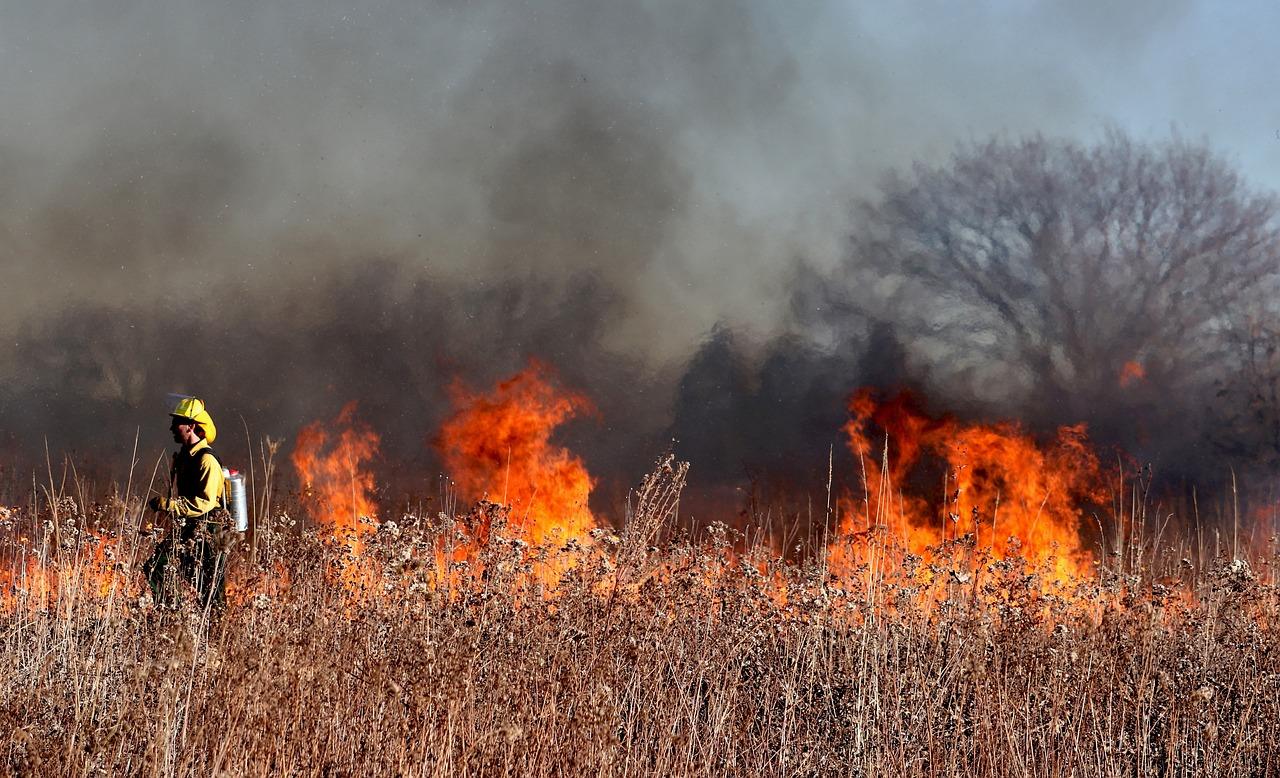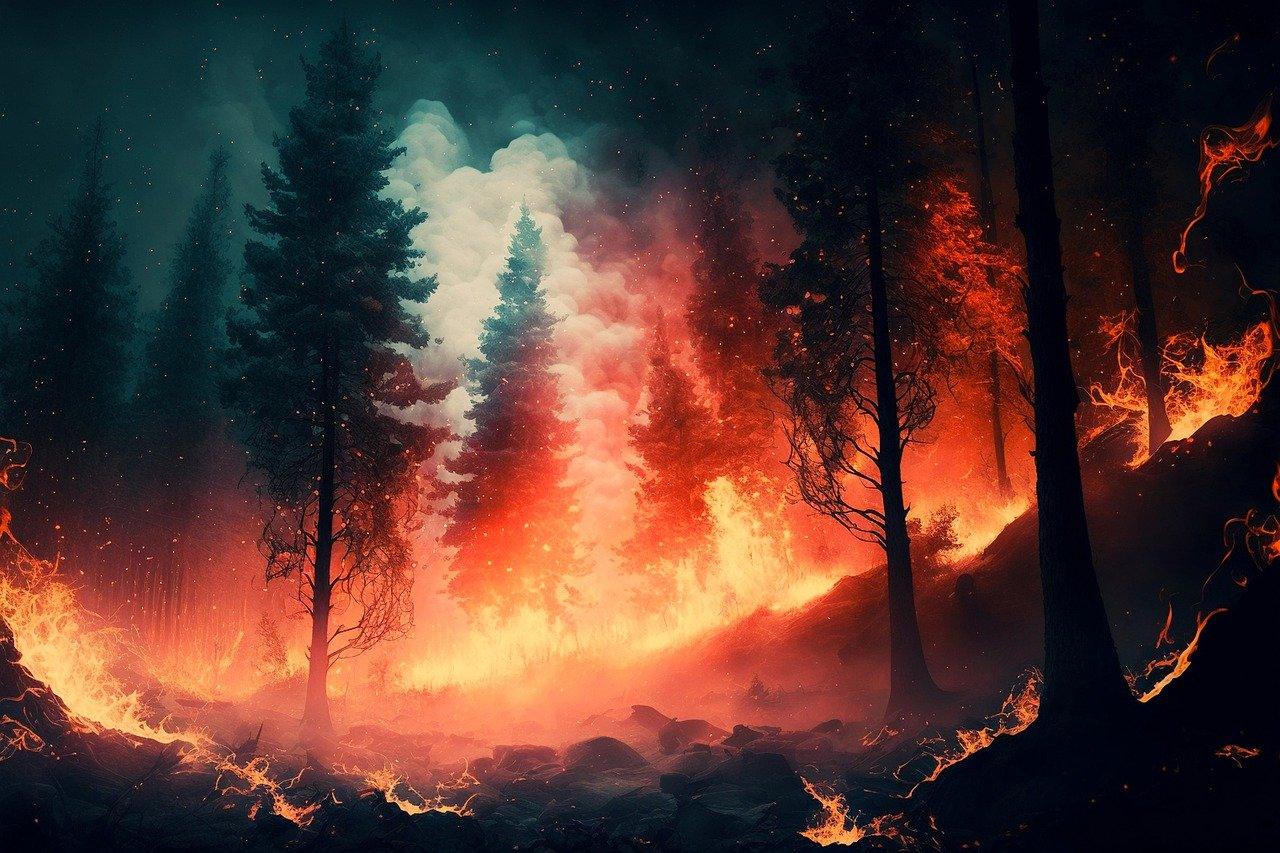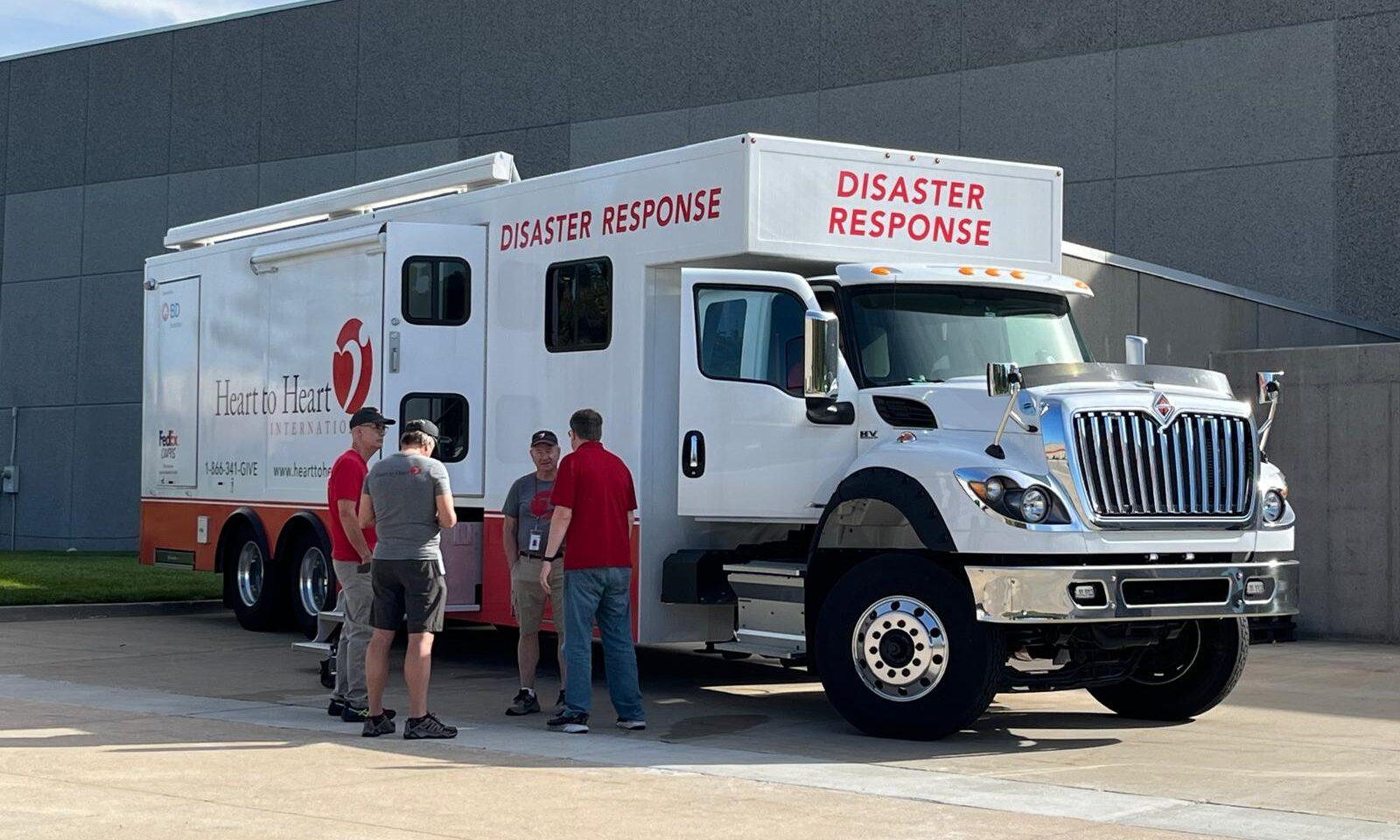
A wildfire is a devastating force of nature. California, with its dry climate and vast landscapes, faces wildfires almost every year. In this guide, we’ll cover everything you need to know about wildfires, their causes, the history of California fires, prevention tips, recovery efforts, and more.
Let’s get started.
Heart to Heart International responds to the devastating fires in California.
Table of Contents
- What is a Wildfire?
- What Causes Wildfires?
- History of California Wildfires
- Why Do California Wildfires Happen Every Year?
- How California Fights Wildfires
- Standard Operating Procedures (SOPs) for Dealing with Wildfires
- What to Do If You’re at Risk of a Wildfire
- How to Support Wildfire Relief Efforts
- Living with Wildfires: A Guide for Californians
- LA Fire News: Stay Informed on Recent Wildfires
- Honoring Firefighters
- Heart to Heart International: Helping Communities Recover
- FAQs About Wildfires
What is a Wildfire?
Wildfires are uncontrolled fires that burn in forests, grasslands, or other natural areas. They start due to natural causes like lightning or human activity (source). Wildfires are dangerous because they spread rapidly and are hard to contain.
What Causes a Wildfire?
Natural Causes
- Lightning Strikes: Lightning is one of the main natural causes of wildfires. Dry thunderstorms are particularly dangerous.
- Drought Conditions: Dry vegetation acts as fuel for fires, making California especially vulnerable.
Man-Made Causes
- Negligence: Campfires left unattended or discarded cigarettes can ignite wildfires.
- Electrical Equipment: Power lines and faulty equipment often spark fires (e.g., 2018’s Camp Fire, source).
- Arson: Intentional fire-setting contributes to several wildfires each year.
History of California Wildfires
Some of the most devastating fires in California history are:
2018 Camp Fire
The deadliest wildfire in California’s history, it destroyed over 18,000 structures, displaced thousands, and killed 85 people. It devastated the town of Paradise and was caused by faulty PG&E equipment. Source
2021 Dixie Fire
Spanning nearly 1 million acres, it became California’s largest single-source wildfire. It destroyed over 1,300 structures and caused significant damage to ecosystems and communities. (source)
2003 Cedar Fire
One of the largest fires in California, it burned 28,676 acres and caused 15 fatalities. This fire highlighted the increasing danger of wildfires near urban areas. (source)
2020 August Complex Fire
This fire scorched over 1 million acres across Northern California, becoming the state’s largest wildfire in recorded history. (source)
Palisades Fire (2021)
Though smaller in scale, this fire underscored the unique challenges posed by urban wildfires near densely populated areas like Los Angeles. (source)
Learn more about Heart to Heart International’s response to the recent wildfire in LA County.

Why Do California Wildfires Happen Every Year?
California’s unique environment makes it highly prone to wildfires:
- Climate Change
Rising temperatures and prolonged droughts create drier conditions, turning vegetation into fuel. (source) - Urban Sprawl
Expanding development into wildland areas increases risks to property and lives. - Forest Management Practices
Decades of fire suppression have led to an accumulation of flammable vegetation, making fires harder to control. - Seasonal Winds
Hot, dry winds like the Santa Ana and Diablo winds exacerbate fire spread. (source)
How California Fights Wildfires
-
California has made significant efforts to combat wildfires:
- Cal Fire: The state’s dedicated firefighting agency is a leader in wildfire management.
- Controlled Burns: Removing excess vegetation helps reduce fire risks.
- Emergency Alerts: Systems like Wireless Emergency Alerts (WEA) warn residents in danger zones.
- Fire Education Programs: Community workshops teach residents how to protect their homes.
Learn about Heart to Heart International’s disaster response efforts.
Standard Operating Procedures (SOPs) for Dealing with Wildfires
Evacuation Plans and Orders
-
Evacuation saves lives. Residents should:
- Familiarize themselves with local evacuation routes.
- Follow official evacuation orders promptly to avoid danger.
- Keep an emergency go-bag ready with essentials like water, food, medications, and documents.
Emergency Alerts and Communication Systems
Staying informed is key. Use:
- Cal Fire’s alert system and apps like Ready for Wildfire (source).
- Local radio and news stations for real-time updates.
- Wireless Emergency Alerts (WEA) on mobile phones for immediate threats.
Role of Firefighting Agencies
Agencies like Cal Fire and local departments are crucial in fighting wildfires. They:
- Deploy ground and aerial resources to contain fires.
- Use controlled burns and firebreaks to limit spread.
- Provide public education and community support during emergencies.
What to Do If You’re at Risk of a Wildfire
Preparation is crucial if you live in fire-prone areas:
Before a Wildfire
- Establish a protective zone around your home by removing flammable materials.
- Pack an emergency kit with essentials: water, food, medications, and secure important documents.
- Plan evacuation routes and stay updated with local alerts.
During a Wildfire
- Follow evacuation orders immediately.
- Wear an N95 mask to safeguard yourself from smoke inhalation.
After a Wildfire
- Return home only when authorities declare it safe.
- Document damages for insurance claims.
- Support neighbors and communities in recovery efforts.
Heart to Heart International’s response to Hurricane Helene and Milton.

How to Support Wildfire Relief Efforts
Wildfires leave communities devastated, but you can make a difference by contributing to relief efforts. Here are ways you can help:
Where to Donate
Financial contributions are often the most effective way to support relief efforts, as they allow organizations to allocate resources where they are most needed.
- Donate to reputable organizations like Heart to Heart International, Red Cross, or California Community Foundation Wildfire Relief Fund.
- Contribute to local fire departments and firefighter relief funds.
Every contribution, no matter how small, helps rebuild lives and supports communities affected by wildfires.
-
In-Kind Donations
- Many organizations accept essential supplies like hygiene kits, blankets, and non-perishable food items.
- Always check with relief agencies for specific needs before donating goods to ensure they are useful.
Volunteer Your Time
- Assist with disaster response organizations to distribute supplies or support shelters.
- Help local communities by participating in rebuilding and recovery efforts.
Fundraising Campaigns
- Start your own fundraising campaign to raise funds for affected individuals and families.
- Use your social media platforms to raise awareness and encourage donations.
Support Firefighters
- Donate to firefighter support organizations like the California Fire Foundation or Wildland Firefighter Foundation to help injured firefighters and their families.
Heart to Heart International is trusted by Charity Navigator.
Living with Wildfires: A Guide for Californians
Adapting to the “New Normal”
Frequent wildfires mean Californians must adapt by:
- Installing fire-resistant materials in homes.
- Participating in community fire-prevention programs.
- Staying educated about fire risks and safety.
Mental Health Resources
Wildfire survivors often face emotional trauma. Resources include:
- Hotlines like the Disaster Distress Helpline (1-800-985-5990).
- Free counseling services offered by organizations like the Red Cross (source).
Urban Planning and Community Design
Long-term changes can reduce wildfire risks, such as:
- Creating buffer zones between urban areas and wildlands.
- Implementing stricter building codes for fire-resistant structures.
- Encouraging sustainable landscaping to minimize fire fuel.
LA Fire News: Stay Informed on Recent Wildfires
Los Angeles frequently faces the threat of wildfires due to its dry climate and urban-wildland interface. Keeping up-to-date with fire news is crucial for residents to stay safe. Recent reports highlight:
- California Fires Map: Check out the California Fires Map right here.
- Current Incidents: Ongoing fire activity in LA County, including containment updates, evacuation orders, and affected areas.
- Emergency Resources: Local agencies like the Los Angeles Fire Department (LAFD) provide real-time updates through apps, social media, and official websites.
- Latest Wildfire Updates: For the latest on LA fires, check the LAFD Newsroom. Staying informed is key to protecting lives and property during wildfire season.
Honoring Firefighters
Firefighters are the true heroes during wildfires. Their bravery and dedication save countless lives and protect natural habitats. Here’s why their work is invaluable:
- Risking Lives: Firefighters face extreme conditions, including intense heat and unpredictable fire behavior.
- Community Support: Beyond battling flames, they educate communities on fire safety and prevention.
- Innovative Techniques: Firefighters use advanced tools like aerial water drops and controlled burns to manage fires.
Support Firefighters
Donate to firefighter support organizations like the California Fire Foundation or Wildland Firefighter Foundation to help injured firefighters and their families. Programs like Cal Fire’s community outreach emphasize the critical role firefighters play in mitigating disaster impacts.

Heart to Heart International: Helping Communities Recover
Heart to Heart International (HHI) plays a vital role in disaster recovery. As a leading healthcare non-profit, HHI provides crucial assistance during wildfires:
- Disaster Response Teams: HHI deploys medical professionals to wildfire-hit areas, ensuring access to essential healthcare.
- Hygiene Kits: Distributes thousands of hygiene kits containing soap, masks, and other essentials to evacuees.
- Healthcare Support: Offers long-term healthcare solutions to rebuild affected communities.
- Community Outreach: Arranges community events to assist at-risk and underserved communities.
- Access to Medicine: Provides access to life-saving medication to local communities, and overseas to at-risk populations.
HHI’s work highlights the importance of healthcare non-profits in aiding recovery efforts. You can support our mission by donating or volunteering.
FAQs About Wildfires
What is a wildfire?
A wildfire is an uncontrolled fire in a natural area, such as forests or grasslands. It spreads quickly and is hard to contain (source).
How do wildfires start?
Wildfires start due to natural causes like lightning or human activities, such as unattended campfires or faulty equipment (source).
Why are California fires so bad?
Factors include prolonged drought, dry vegetation, hot winds, and human activities (source).
How long do wildfires last?
The duration varies, but many wildfires last for days or even weeks, depending on weather conditions and firefighting efforts.
Is there a fire near me?
Check real-time updates on current fires in California at Cal Fire Incidents.
How can we prevent wildfires?
Preventive measures include creating defensible spaces, following fire safety guidelines, and reporting suspicious activities (source).
How do we stop wildfires?
Firefighters use methods like water drops, firebreaks, and controlled burns to stop wildfires.
What caused the biggest wildfire in California?
The 2021 Dixie Fire started due to PG&E’s electrical equipment failure (source).
How fast can a wildfire travel?
Wildfires can move at speeds of up to 14 mph under the right conditions (source).
Key Takeaways
-
- Wildfires are a growing concern, particularly in California due to its climate and geography.
- Understanding wildfire causes, history, and prevention can save lives and property.
- Non-Profit Healthcare organizations like Heart to Heart International play a vital role in mitigating and recovering from wildfires.
- Preparing for the “new normal” of frequent wildfires is essential for all Californians.
With proactive steps and community efforts, we can face this challenge head-on and build a safer future. Let’s act now to help LA recover!
